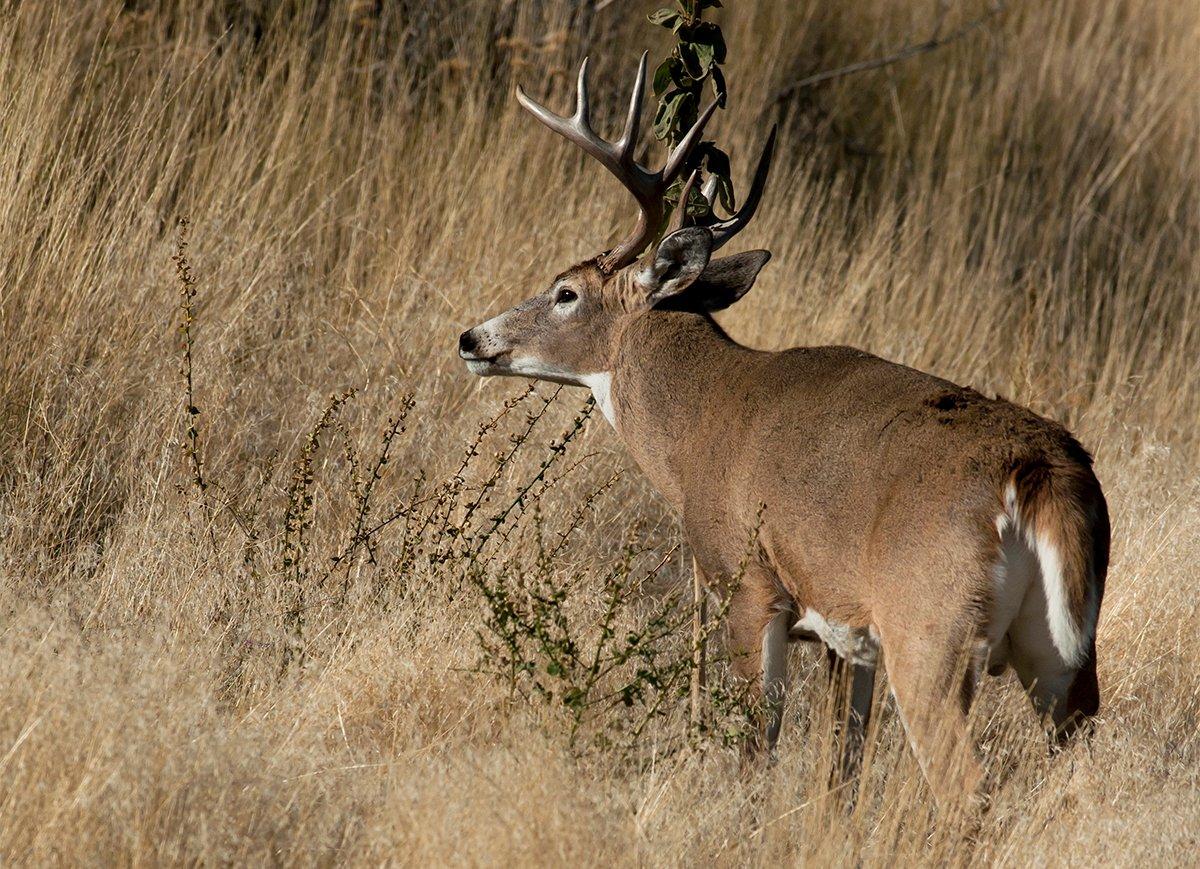Deer hunting is full of blanket statements, but it's far from black and white. Here's a look at the shades of gray
Sometimes we rely too much on what others have to say. But the best way to learn about anything is to experience it firsthand. We live in an era where knowledge is literally at our fingertips, but that access to unlimited information can have a counter effect. We don't always think for ourselves. Our learning comes from reading and listening to the advice of others. That includes deer hunters. Fact is, deer hunting — and all the rules we're told about it — isn't black and white. There are shades of gray all around. Just like these:
1. Pressuring Deer: Just about every hunting article you read says to avoid pressuring deer. And it's absolutely right. Repeated pressure can negatively affect deer. But some hunters go overboard and are way too passive. Plus, the research shows a little pressure (once or twice) might not affect them as much as hunters historically believed. Every buck has its own personality and responds differently to human intrusion. Small amounts of pressure (scouting and hunting responsibly) doesn't affect most deer as much as some believe.
2. Fresh Buck Sign: Ever seen a rub and discredited it as being too old to matter? Don't do that. Last September, I watched a 140-inch buck make a rub on a 10-inch cedar tree. That tree hadn't been touched prior to that day, but the buck rubbed the trunk raw. At 5 yards away, it was a great show. But I went back in there this March to look for sheds and just happened to glance at that tree trunk. If I hadn't known when the rub was made, I'd have guessed it was two years old, if not older.
3. Size of Rubs: It's commonly believed that little bucks make little rubs and big bucks rub big trees. But there's more gray area here. I've watched 150-plus-inch deer rub thumb-sized saplings. I've also seen a fork horn battle a softball-sized beech. Bucks make rubs without following many rules.
4. Blood Trailing: Wounded deer always run downhill and toward water, right? No. I've watched wounded deer tip over, walk down hills, and run up others. I've followed (seemingly) perfectly hit deer 3/4 of a mile before finding them. The kicker — something minute happened, such as a deflected arrow upon entry, slight contortion of the deer's body which moved internal organ placement, etc. I've also seen straight-liver-hit deer take three steps, flick their tail, and hit the dirt. The truth is, every situation is different. And bucks typically run toward where they feel safest after being shot, or sometimes toward water. Every shot reaction and tracking job is unique, and again, deer don't follow any rules.
5. Nocturnal Buck: This term gets passed around like a shrimp platter at a party. Bucks can seem nocturnal if you aren't close to their beds, on preferred travel routes, or focused on their key food and water sources. But very few bucks are truly nocturnal. In fact, research shows that most mature bucks move at least a short distance from their beds during daylight hours. The distance depends on conditions, circumstances, and the buck's personality.
6. Moon Phases: Many wildlife biologists have debunked the theory that moon phases (new moon, full moon, etc.) greatly influence deer movement. However, they have produced results that show moon overhead / underfoot positions can encourage deer movement, especially under the right circumstances. It has the most influence when it happens at dawn and dusk, when deer move the most, and in areas with average or less hunting pressure.
7. Buck-to-Doe Ratios: A lot of hunters see a bunch of does and think the herd is out of whack. While that's possible, it generally isn't as bad as it seems. For starters, it's biologically impossible for the pre-season fall ratio to be more skewed than 1:5, and even that's rare. Remember, you must count both buck and doe fawns in this equation. The influx of new fawns each year typically improves the ratio, bringing it back to something no more skewed than 1:3 (bucks-to-does) in most cases.
8. October Lull: Hunters who still believe in this didn't get the memo. Research proves deer gradually become more active as summer progresses into fall. Daylight activity peaks around mid-November and begins tailing off after the rut. The biggest reason hunters believe in the lull is because deer transition from summer to fall ranges, and food sources, between mid-September and early October. But many hunters don't adapt their stand locations to follow suit. They keep hunting in locations where they were seeing deer before, instead of where deer are relocating to.
9. Lip Curling: Many believe this is a buck's way of checking whether or not a doe is in estrus. When a buck shows his gums, the urine-scent from the doe passes across the vomeronasal organ in the roof of the buck's mouth. However, the reason we know for sure this is not the buck checking for estrus status is because that organ does not lead to the decision-making part of a buck's brain. Instead, it leads to a part of the brain that controls physiological and reproductive responses. In essence, it's a stimulant for bucks. A buck's Flehmen response (lip curling), is a sign of him elevating his body to peak breeding status.
Many commonly held deer hunting beliefs are based in truth, but you need additional thinking and experience beyond what you hear or read to really know what's going on. And sometimes? Those beliefs are just myths. So why bring it up? Free and critical thinking will make you a better hunter. Remember to see the deer woods in shades of gray, because things aren't always as they seem.
Don't Miss: How to Get in a Buck's Way
Check out more stories, videos and educational how-to's on deer hunting.











